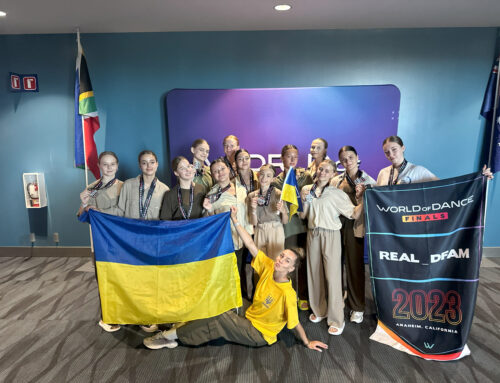AMT graduates are in high demand in the aviation job market
Published in the September 28 – October 11, 2016 issue of Morgan Hill Life
By Lauren Newcomb

Photo courtesy Gavilan College
At the San Martin Airport hangar that serves as Gavilan College AMT program lab, Noel Perez, Chris Bonk and Israel Barajas (l-r) work as a team to remove the tail and rear flap rudders from a demonstration plane.
More than 895 million passengers traveled on airline flights through U.S. airports in 2015, a record high, according to the Bureau of Transportation Statistics. All those travelers’ lives depended upon the high standards of airplane maintenance from professionally-skilled mechanics like those trained at Gavilan Community College Aviation Maintenance Technology program.
Gavilan’s AMT program started at the Hollister Municipal Airport decades ago where students learned in World War II-era military structures. In 2010 it was announced that the program would move to the county’s San Martin Airport. However, it took time and several different concepts before the current plan was able to move forward. In the interim, classes were held on the main campus in Gilroy, and some labs were held in rented hangar space at the San Martin Airport.
The hard work paid off. Campus officials and instructors and members of the community celebrated the Sept. 13 grand opening of a brand-new hangar and a modern classroom facility, specially built using Gavilan’s facility bond measure E money, to serve as the permanent home of the AMT program.
Passenger safety is of utmost importance for airlines, so that’s why they require highly-skilled employees to maintain the engines, propellers, the airframe and other components of modern passenger airplanes, said Herb Spenner, senior instructor with Gavilan’s program.
“A plane has to fly,” he said. “If the plane breaks down, you can’t just pull over to the side of the road.”
Students at Gavilan’s AMT program learn early in their studies that aviation maintenance is quite a bit different from automotive maintenance — and the stakes are much higher.
The AMT program lasts two years, or a total of 1,900 hours. Students finish when they become an FAA-certified mechanic.
“We can do welding, riveting, and machine work here,” Spenner said. “It’s much more than a standard hangar — it’s a lab as well.”

Photo courtesy Gavilan College
At the San Martin Airport hangar that serves as Gavilan College AMT program lab, Noel Perez, Chris Bonk and Israel Barajas (l-r) work as a team to remove the tail and rear flap rudders from a demonstration plane.
The new facility at the San Martin Airport took six years to get through roadblocks to build. The AMT program is exclusively for aviation maintenance. The students do not learn to fly the planes or do airport administration. The program’s focus on only maintenance instruction makes it very detailed and intensive. Students learn the strict FAA requirements for proper aircraft maintenance.
Gavilan’s AMT program is now the only such program left in a region served by the FAA’s Flight Standards District Office that ranges from San Francisco to Salinas. Making the move from Hollister to San Martin increases exposure for Gavilan College and also opens the program to more people in the South Valley.
After receiving their FAA certifications, AMT graduates are in high demand in the job market. “We have graduates working down in Salinas on multi-million dollar World War II fighter plane restorations,” Spenner said. “We have people up at Morell Space Systems where they build satellites. I asked them why, because we don’t teach anything about satellites. They said that nobody does, but that we’re the only ones who teach that level of discipline needed to work on their satellites.”
Many graduates go on to work at United Airlines and other airlines. One Gavilan graduate now works as a pilot and mechanic in Alaska. Another graduate maintains the CalStar helicopter that flies out of the San Martin Airport.
Demand for A&Ps is increasing because many in the profession are retiring. Airlines have a high demand for people trained in aviation maintenance, so students who successfully complete Gavilan’s AMT program can be almost sure of finding a well-paying job. With the opening of this new facility, Gavilan can expand its current enrollment of 25 to 30 students to as many as 50 students.
Students in the program can pursue their associate’s degree from Gavilan after receiving their FAA certification. They can continue their training in the “2 + 2 Program” at San Jose State University’s aviation department. There, students learn maintenance management or flight management to earn their bachelor’s degree. The advanced degree can really make a difference in an airline considering the graduate in the hiring process, said AnaMaria Pena, a human resources representative with United Airlines who was at the Sept. 13 grand opening.
“Avionics is one of the areas we look for,” she said. “We struggle more in filling our avionics vacancies than our general A&Ps.”
On one side of the hangar, students focus on learning the maintenance of the airplane’s power plant components. There, they will work on engines, including taking them apart, diagnosing problems and measuring the components. They’ll also work on propellers and fuel systems. On the other side of the hangar, the students can focus on airframes, electronics, metals, welding and hydraulics. Instructors plant some “problems” in the engines and have the students attempt to diagnose and fix the problems, Spenner said.
On the airframe side of the hangar, the instructor proudly showed off new equipment and machinery for student instruction. One of the machines provides automation of certain tasks, lending itself to efficiency and accuracy.
“This is metalworking equipment, and it’s very exciting to me because this is where we get into automated machining,” he said.
When the students learn about automation, they learn to enter precise measurements and specifications, and the machine will cut the metal for them. This allows for greater accuracy, and it’s much faster than cutting the metal by hand.
“This is where we think manufacturing and mechanics are going,” Spenner said. “At the place down in Salinas where they’re doing restorations, they are actually programming their parts because they can no longer buy a lot of them.”
For AMT students going into the job market, the future looks bright. “For United, because it’s a unionized position, the salaries start out about $40,000-$45,000, but that’s just the base,” Pena said. “They start going up with a seven year progression, and by then they’re making almost $100,000.”
Students are gaining much from the updated equipment at the facility compared to what Gavilan provided in training years ago.
“Considering the history of the where the aviation program has been, this is first-class,” said Ron Hannon, dean of kinesiology and athletics. “The college is fortunate to have this new facility. It’s a huge asset.”
When the AMT program relocated to Gavilan’s main campus in 2010, it was meant to be temporary, for around six months. Although the process took considerably longer than expected, the project eventually got the green light and moved forward.
“Public works projects are always fun,” Vice President of Administrative Services Frederick Harris said with a chuckle. “They can be challenging. You have to arrange the lease, and since it was all raw dirt before, you have to go through all the environmental concerns, specifically for water and sewage, as well. It’s a process that can be lengthy.”
With the AMT program up and running at its new facility, student enrollment capacity has doubled. This feeds into the increased demand in the job market.
“After the Vietnam War, demand dropped off and people redirected their resources to other program, while Gavilan kept focusing on this,” Harris said. “This is the kind of thing I think community colleges should shine on in terms of technical development and careers training, for people who want to increase their skills or go into another line. This is where community colleges help the economy the most.”






